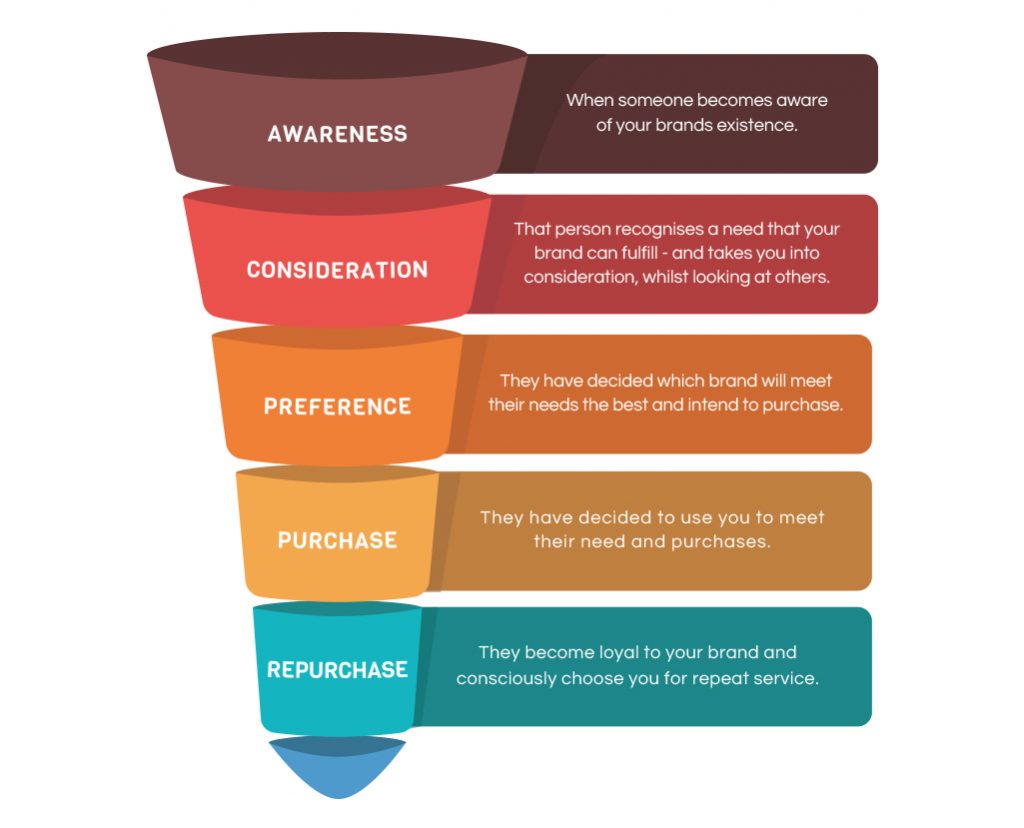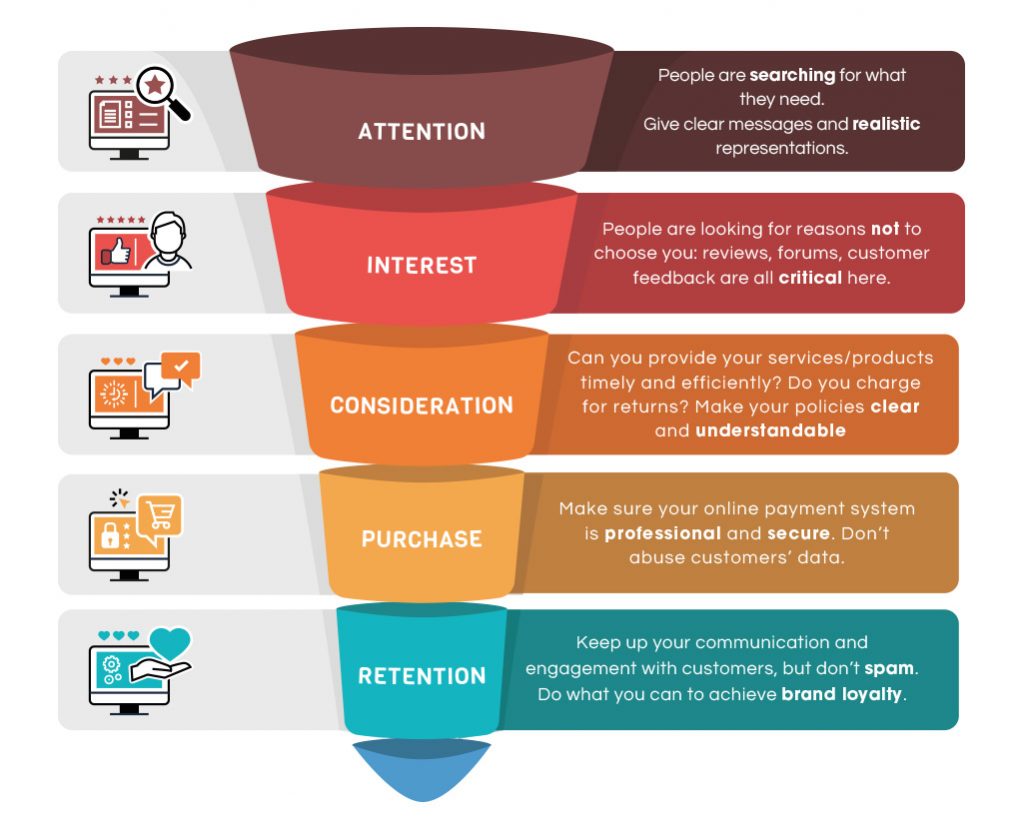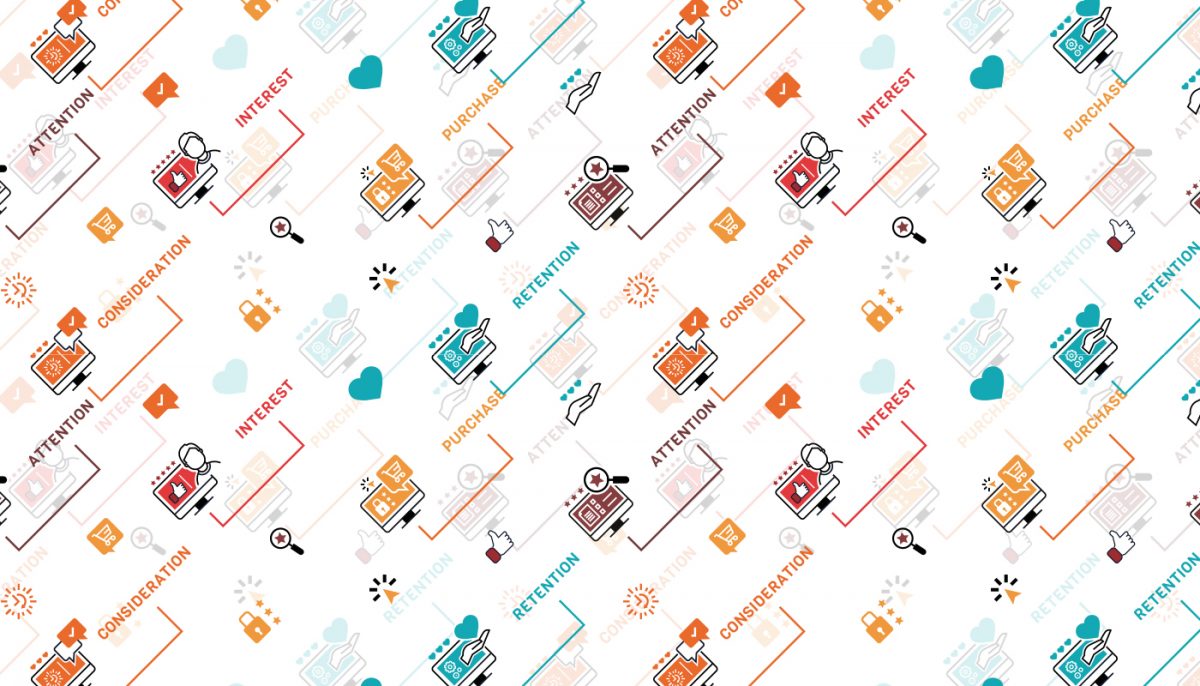Many business owners may have heard of the sales funnel or buyer journey before. Both are very similar, just looked at from different perspectives.
The buyer journey has changed in today’s digital landscape, and we should be accommodating to that. At its basic level, the buyer journey is the process that people traditionally have been thought to go on, when transforming from strangers to customers.
The traditional journey starts at awareness, where a person is exposed to your brand and it is no longer unknown. Awareness has been achieved through billboards, leaflets, or creative PR campaigns. Ending at retention, the traditional buyer journey model of marketing has had proven results when businesses guide people along it and utilise each stage through specific and targeted marketing.

Today, the buyer journey isn’t as linear as it once was. People could be approaching their journey with many variants of knowledge, needs and competencies. The foundations remain, but the way that each person is targeted and communicated with must be tailored specifically to each chapter of the journey. Building trust and (more importantly) not abusing that trust is at the core of guiding potential customers down a path that ends in retention. The new buyer journey follows a model as follows:
Attention –
Gone are the days of a person simply being exposed to a brand via a billboard. Today, people are aware of their needs, and are searching for ways to fulfil them. The first stage of the digital buyer journey is to gain their attention in this search. This can be done with clear messages and realistic representations of your offerings. The objective of your marketing here should be to assist in this search, not to dominate it.
Interest –
Once you have gained a person’s interest in your products or services, you need to impress them. More often than not, people are looking for reasons not to choose you, they will be looking at reviews, forums, your website, and any other customer feedback (Twitter’s a big one). It’s important here to ensure that any negative feedback you may receive (nobody’s perfect) is dealt with positively and appropriately.
Consideration –
At this stage, the person has decided that after their research, their preference is you (hopefully). The deal isn’t done yet, though. Now, they’ll be looking at your delivery/refund policies and prices. You must build trust through clarity here about your refund costs and delivery times and prices. If a customer is given any surprises later on their journey, they’ll be leaving negative feedback, which will make future potential customers drop off before they reach this stage.
Purchase –
At this point, you still haven’t sealed the deal. Online payments can still be a drop-off point. Secure payments and a professional image are absolutely crucial here. It’s also important at this stage to make your usage of information policies clear and give people the option to opt-in to you holding any of their information (GDPR).
Retention –
This is the modern equivalent to re-purchase. They now must receive what they have paid for, on time, and with no damages. You can build brand loyalty here by following up and keeping up good (but not spammy) communications with your customers. Today, brand loyalty and engagement is as important as repeat purchase.

Your marketing strategy must include tactics that work for each stage of the buyer journey, and it must guide users down a gradual path with quality information, quality services, and management of expectations.
If you’d like us to help with your marketing, website or branding, give us a call and we’ll have a chat.
Any infographics and copy in this blog belong to The Graphics Department. Any re-use of this should be pre-approved by The Graphics Department.
